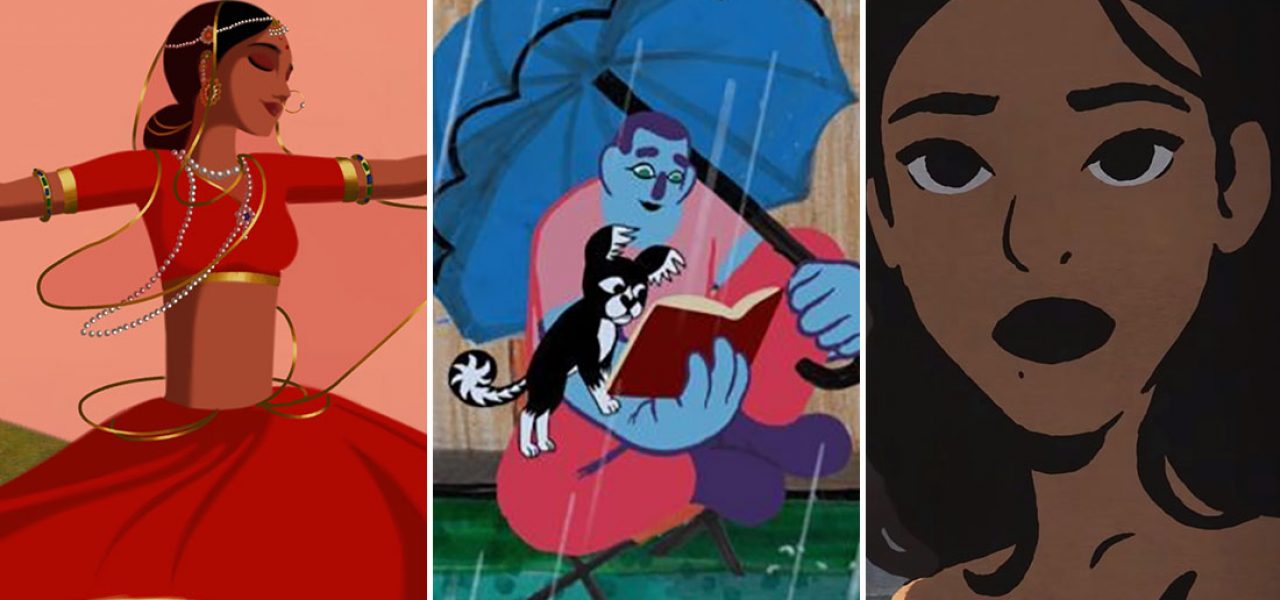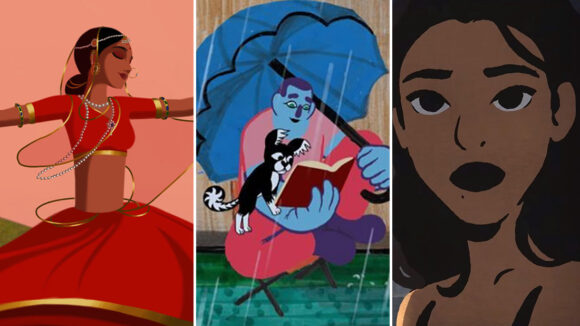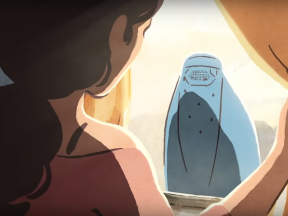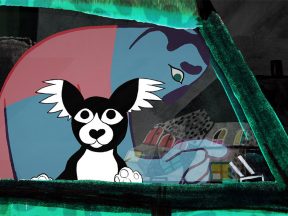

Review: ‘The Swallows of Kabul,’ ‘Bombay Rose,’ ‘Marona’s Fantastic Tale’
Data doesn’t always figure in discussions about women in animation being systematically excluded from positions of executive and artistic leadership. Numbers, of course, would paint a discouraging picture. At the studio level in the U.S., women who’ve directed or co-directed a major feature in the last decade amount to no more than a handful.
But as shown by the Animation Is Film Festival in Hollywood, which held its third edition on October 18–20, female artists helm more animated productions abroad — albeit on a mostly independent scale. The festival, an essential platform for regionally and stylistically diverse films, featured three 2d features directed by women this year.
The films, all with female-driven narratives, are set in Afghanistan (The Swallows of Kabul), India (Bombay Rose), and France (Marona’s Fantastic Tale). They are aesthetically distinct, but there are thematic common denominators. All three have protagonists with agency, in spite of their limited freedom, and all tackle morally complex ideas and serious socioeconomic issues through the subtle powers and emotional distance the medium allows for.
The Swallows of Kabul
In Zabou Breitman and Eléa Gobbé-Mévellec’s The Swallows of Kabul, a French project adapted from the eponymous novel by Yasmina Khadra (the pen name of Mohammed Moulessehoul) and produced by Les Armateurs, impending violence permeates the drama unfolding in the Taliban-controlled Afghan capital.
This impacts the women in the film in profound ways, stripping them of their basic humanity. For instance, the homogenization of their image under a burka, a notion that the delicate watercolor-inspired design tackles beautifully, sentences them to anonymity even in death.
Swallows features a gruesome stoning, which, though handled with tact, signals that this depiction of Afghanistan under the Taliban takes a more adult route than Nora Twomey’s The Breadwinner. Two couples — one comprised of two intellectuals with dreams of changing their homeland through education, the other of a prison guard and his ill wife — collide in devastating circumstances. Their love is tested, and they find hope amid darkness.
Breitman has had an extensive career as an actress and live-action filmmaker, while Gobbé-Mévellec has worked as an animator on The Rabbi’s Cat, April and the Extraordinary World, and Ernest & Celestine. Swallows, which premiered at Cannes in the Un Certain Regard section, is their debut animated feature as directors.
The film followed an unorthodox development process that lent emotional gravitas to its craftsmanship. Drawing on her background in live action, Breitman started by shooting the entire script with actors dressed in costumes resembling those that would be drawn. Gobbé-Mévellec and the animation team used the resulting footage as prime reference.
The graphic aspects of Swallows in fact resemble Ernest & Celestine, even if tonally the two are opposites. They share broken-line character design, minimal facial detail, and the ethereal quality of colors seeping beyond the edges in each shot, like watercolors on paper.
As harsh as the misogyny and oppression are, the visual artistry elicits poetry from the most difficult sequences. Although shown, the cruelty doesn’t aim for shock value: a stain of blood on clothing fully communicates the tragedy that’s occurred. Shots from inside the burka remind us of the walking prison the garment represent for some women, but it also highlights that these women can still put up a fight from behind the shroud.
Bombay Rose
Gitanjali Rao’s Bombay Rose is slightly more magical in its approach to real-life conflicts, but just as diligent in portraying a complicated city. The film grapples with a variety of topics, ranging from child labor to economic migration and the taboos around a romance between a Muslim man and a Hindu woman. Unlike Swallows, Rao’s feature, with its multiple subplots, lacks focus. Still, the overall experience brims with authenticity — it was animated in India.
In one scene, the characters visit a movie theater to watch a typical Bollywood blockbuster (also rendered in animation). Bombay Rose thus contrasts the fiction of Bollywood cinema with the reality of the crowded metropolis. The Bollywood-inspired clips, featuring fictional action star Raja Khan, are rendered in more cartoonish fashion, with fewer facial details on the characters, darker shadows, and a brighter color palette.
Rao and her team also play with hues when Tara, a young girl learning English, sees Mumbai through the eyes of her teacher Ms. D’Souza. Backgrounds turn black and white, and buildings regress to how they looked decades in the past.
Interestingly, musical choices conjure up an air of nostalgia — not only popular Indian songs, but even a version of a classic Mexican tune, “Cucurrucucú Paloma,” that speaks of heartbreak. While motion tends to be limited or a tad stiff throughout, there are genuinely evocative moments, due to the effective combination of imagery, sound, and sentimental context.
Translating Mumbai, with all its intricacies, into animation is itself a tall order. To anchor this idiosyncratic animated version of the city in layered, if sometimes convoluted, storytelling reflects the talent involved.
Marona’s Fantastic Tale
While Swallows and Bombay Rose vividly confront grave social matters in developing countries, Marona’s Fantastic Tale, from Romanian director Anca Damian, examines the human condition from the point of view of a female dog in a whimsical and aesthetically eclectic universe.
In the film’s psychedelic interpretation of Paris, conceived by Damian and designer Brecht Evens, characters are made up of disparate shapes; realism is thrown out in favor of dazzling colors and fluid lines. It’s an endlessly ingenious trip that confidently exploits the medium’s boundless freedom to reimagine and defy the world.
Marona, an adorable black-and-white mutt, was the ninth and final dog in her litter, and the unluckiest of them all: she was given away right after birth. Her tale takes us through several different owners — an acrobat, a couple, and a teenager — each of whom renames the pup. Their professional dreams, quarrels, and general disinterest ensure that Marona never finds a permanent home.
Along the way, the heroine, who gets repeatedly mistaken for a male, gains insight into what triggers humans to act poorly and self-sabotage. She is more astute and emotionally intelligent than most people, but her adoration for her caretakers makes her vulnerable. It’s an amusing narrative, but the film also makes potent observations about how we take the love of pets for granted, and how we’re capable of committing horrible acts against each other.
Less direct than the other two films in its analysis of existential questions, Marona’s Fantastic Tale stands out for its visual irreverence and endearing leading lady. Lizzie Brocheré’s narration grants us access to Marona’s searing thoughts and melancholic reflections. Damian has worked in both live action and animation; this is likely her most fanciful journey yet.
All three films offer great lyrical storytelling. Beyond that, they also display a sense of artistic purpose, their narratives decoding the worst and best of humanity in beautifully unrepeatable frames.
Marona’s Fantastic Tale will be released in North America by GKIDS. Bombay Rose and The Swallows of Kabul have yet to announce North American distribution plans. The Swallows of Kabul and Marona’s Fantastic Tale were both submitted in the best animated feature category of this year’s Academy Awards.

.png)


